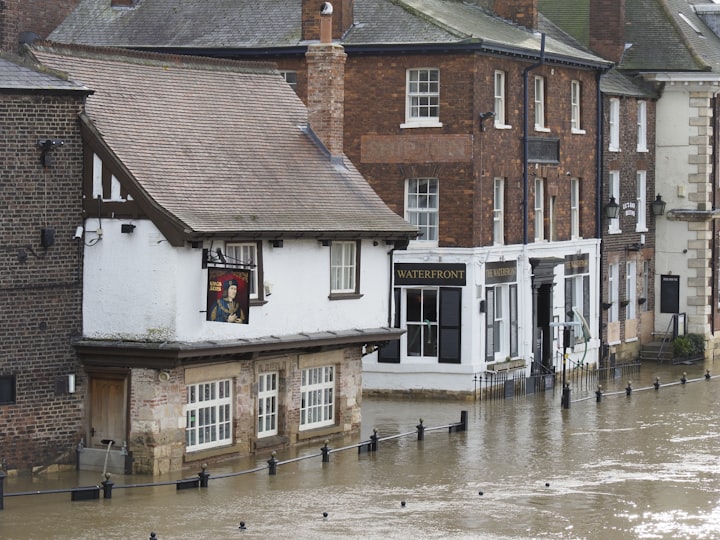Understanding Deed of Covenant in Leasehold Properties: Legal Requirements
When purchasing a leasehold property, the conveyancing process may take longer due to the involvement of a third party - the freeholder who is the landlord. As part of the sale of a leasehold property, the buyers' solicitor will require information that only the landlord can provide.

A Deed of Covenant is a legally binding agreement between a landlord and tenant that sets out the terms of a leasehold property. Understanding the legal requirements for a Deed of Covenant is essential for any tenant or landlord to ensure their rights are fully protected. In this blog post, we will explore the legal requirements of a Deed of Covenant in leasehold properties and provide an overview of what both parties should expect from the agreement.
What is a deed of covenant?
A deed of covenant is a document that outlines the legal rights and obligations between two or more parties when it comes to a leasehold property. It is also known as a house deed or title deed, and is usually required in order to transfer ownership of a property.
The deed of covenant usually sets out details such as who owns the property, how it will be managed and maintained, who is responsible for making payments, what can and cannot be done with the property, and any restrictions on use of the property. It also contains provisions regarding any disputes between the parties that may arise, and can serve as evidence in court proceedings. The deed of covenant will typically be signed by both parties and witnessed by at least one witness.
When is a deed of covenant required?
A deed of covenant is a legal document which outlines the obligations and duties of a party in relation to a leasehold property. Generally, a deed of covenant is required when a party takes on the ownership or management of a leasehold property. A deed of covenant will typically set out the terms of the relationship between the lessor and the lessee, such as payment obligations and other rights and responsibilities.
In certain situations, a deed of covenant may be required to ensure that title deeds are fully registered with the relevant authorities. For example, in some jurisdictions it is necessary to register house deeds when transferring the ownership of a property from one person to another. In these cases, a deed of covenant must be signed by both parties in order to validate the title deed registration.
In other situations, a deed of covenant may be required if the leasehold property has been subject to alterations or improvements, such as when adding an extension or making significant renovations. This is to ensure that all parties are aware of their respective rights and responsibilities with regard to the changes made to the property.
What are the legal requirements for a deed of covenant?
A deed of covenant is a legal document that outlines the obligations and responsibilities of a tenant and landlord in a leasehold property. This document must be agreed upon by both parties and is typically registered with the local land registry office. It is important to ensure that the deed of covenant is properly drafted as it can have serious legal ramifications for both the tenant and landlord.
The legal requirements for a deed of covenant depend on the specific jurisdiction, but some basic requirements are generally the same across most countries. In order for a deed of covenant to be valid, it must include the full names of both parties involved, their addresses, and the duration of the lease. The deed of covenant should also list all applicable fees, such as the rent payable, any penalties for late payments, and any restrictions on the use of the property. Additionally, title deeds or house deeds must also be attached to the deed of covenant in order for it to be legally binding.
It is important to note that in some jurisdictions, there may be additional legal requirements for a deed of covenant. It is best to seek legal advice from a qualified attorney before signing or creating a deed of covenant to ensure that all applicable laws are followed.
How do I create a deed of covenant?
Creating a deed of covenant can be a complex task, and it is essential to make sure all legal requirements are met. The first step in creating a deed of covenant is to collect all of the necessary information, such as the names of the parties involved, the terms of the agreement, and any other relevant details. Once this information has been gathered, the deed of covenant must be written out in clear and concise language, which includes stating any required rights or obligations for each party.
Once the deed of covenant has been written, it should be reviewed by a legal expert to ensure that it meets all applicable legal requirements. After any revisions have been made, the deed of covenant should then be signed by both parties and witnessed by an independent third party. Once these steps have been completed, the deed of covenant should be stored in a safe place to ensure that it is accessible in the future.
By following these steps, you can create a legally binding deed of covenant that meets all necessary requirements. It is important to remember that each leasehold situation is unique, and legal advice should be sought if you are unsure about any part of the process.
What are some common mistakes made with deeds of covenant?
One of the most common mistakes made with deeds of covenant is not understanding the legal requirements in the first place. Before signing any document, it is important to make sure that you understand the full extent of what you are signing and that you understand the rights and obligations that come with the deed.
Another mistake is not making sure that the deed is properly recorded in a public record. It is essential that the deed be registered at the local land registry office in order to ensure that it is legally enforceable.
In addition, it is important to understand the process of creating a deed of covenant and to make sure that all necessary documents and paperwork are in order before submitting them for registration.
Finally, it is also important to review the deed carefully and make sure that all parties involved are in agreement before signing the document. It is essential to read and understand the terms of the deed before signing it to ensure that all parties involved understand their rights and obligations.
Click Here to know More: Understanding Deed of Covenant: What It Is and How It Works
Conclusion
A deed of covenant is a legal document that outlines the responsibilities of both the landlord and tenant in a leasehold property. The requirements for creating a valid deed of covenant are complex, but it is important to understand them in order to protect both parties’ rights and interests. When creating a deed of covenant, make sure to properly complete all house deeds and include all relevant terms and conditions. Doing so will help to ensure that your leasehold property is properly protected.
About the Creator
Land Registry Online
Land Registry Online aims to provide a simple process, leading the way with online property document provision. We assist in streamlining the conveyancing process & simplifying access for homeowners.






Comments
There are no comments for this story
Be the first to respond and start the conversation.